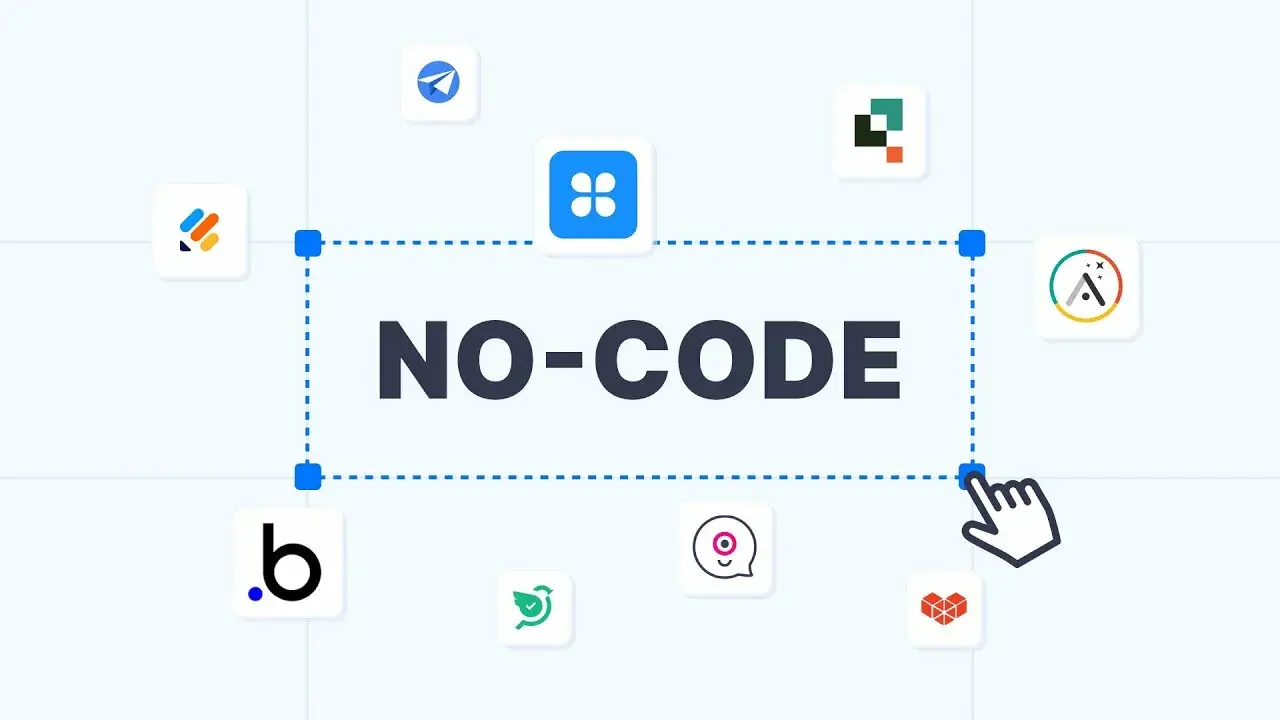The Rise of No-Code and Low-Code Development Platforms
No-code and low-code platforms are reshaping the software development landscape by enabling faster, more accessible app creation, even for users without extensive programming expertise. These platforms leverage drag-and-drop interfaces, pre-built modules, and automation to reduce development time and costs, empowering both technical and non-technical teams to bring ideas to life.
In this article, we’ll explore how no-code and low-code platforms differ, their benefits, and the potential risks businesses should be aware of. Whether you’re a startup looking for a quick minimum viable product (MVP) or an established company aiming to accelerate digital transformation, understanding these platforms can be key to staying competitive in 2025 and beyond.
Table of Contents
1. What Are No-Code and Low-Code Platforms?
No-Code Platforms
- Definition: Tools that enable users to build applications without writing any code.
- Mechanism: They provide visual interfaces and pre-built templates for designing workflows, databases, and UI elements.
- Target Audience: Often marketed toward business analysts, marketers, and entrepreneurs who lack coding skills.
Low-Code Platforms
- Definition: Allow developers to build apps with minimal hand-coding, combining drag-and-drop features with the option to add custom code where needed.
- Mechanism: They streamline repetitive tasks and integrate standard modules but also allow more customization than no-code solutions.
- Target Audience: Suited for professional developers looking to speed up development, as well as tech-savvy business users requiring some custom logic.
2. Key Benefits of No-Code and Low-Code Development
Accelerated Time-to-Market
- Visual interfaces and pre-built templates help teams launch MVPs or new features in days or weeks instead of months.
Cost Efficiency
- Reduces the need for a large development team, cutting down on hiring and training costs.
Empowering Citizen Developers
- Non-technical users can prototype ideas, reducing bottlenecks on overburdened IT departments.
Flexible Iteration
- Quick updates and changes can be made without extensive refactoring, thanks to modular and component-based structures.
Built-In Integrations
- Many platforms come with pre-configured connectors for popular services (e.g., CRM systems, payment gateways, or email marketing tools).
Relevant Keywords: “no-code benefits,” “low-code advantages,” “rapid app development”

3. Popular Use Cases Across Industries
3.1 E-Commerce and Retail
- Inventory Management: Creating custom dashboards that track stock levels, automate reorders, and integrate with shipping services.
- Customer Engagement: Developing simple loyalty apps or chatbots for personalized shopping experiences.
3.2 Financial Services
- Workflow Automation: Streamlining processes like loan approval or account setup without building complex applications from scratch.
- KYC/Compliance Tracking: Quickly creating forms and databases for regulatory compliance.
3.3 Healthcare
- Patient Portals: Setting up secure, user-friendly interfaces for appointments, telemedicine, and medical records.
- Internal Dashboards: Tracking patient flow, managing staff schedules, or overseeing insurance claims.
3.4 Marketing and Sales
- Landing Page Builders: Launching targeted campaigns with integrated lead capture forms.
- CRM Customization: Tailoring lead management workflows without relying on developer bandwidth.
3.5 HR and Recruitment
- Candidate Tracking Systems: Building custom pipelines for resumes, interviews, and evaluations.
- Onboarding Portals: Automating new-hire documents and training modules.

4. Top No-Code and Low-Code Platforms
- Bubble
- Type: No-Code
- Strengths: Comprehensive app-building with integrated database, responsive UI, and plugin ecosystem.
- OutSystems
- Type: Low-Code
- Strengths: Enterprise-level capabilities, robust dev tools, supports large-scale app deployments.
- Microsoft Power Apps
- Type: Low-Code/No-Code Hybrid
- Strengths: Seamless integration with Office 365, strong enterprise security, and a familiar Microsoft ecosystem.
- AppSheet (Google)
- Type: No-Code
- Strengths: Easy to sync with Google Workspace and powerful automation features for data-driven apps.
- Mendix
- Type: Low-Code
- Strengths: Model-driven development, multi-cloud deployment options, strong collaboration tools.
Each platform offers distinct advantages—be it enterprise integration, community support, or user-friendliness—so the right choice depends on your budget, technical expertise, and project scope.

5. Challenges and Limitations
5.1 Limited Customization
- No-Code platforms may not support complex logic or advanced use cases, requiring a separate development effort for highly specialized features.
5.2 Vendor Lock-In
- If a platform discontinues certain features or its pricing changes, migrating an entire application can be time-consuming.
5.3 Performance Concerns
- Some no-code/low-code tools generate less optimized code, potentially impacting app load times or scalability.
5.4 Data Security
- Handling sensitive data may require added encryption, compliance certifications (GDPR, HIPAA), or private hosting arrangements.
5.5 Skills Gap
- While no-code is accessible, some degree of technical know-how (e.g., data modeling, workflows) is still beneficial for creating effective, secure apps.
6. Best Practices for Implementation
Start with Small Projects
- Pilot with a low-risk, high-impact initiative (e.g., an internal dashboard) to demonstrate feasibility and gain stakeholder buy-in.
Establish Governance
- Define roles and permissions. Prevent duplication of efforts by setting clear development guidelines for citizen developers.
Involve IT Early
- Even when citizen developers build the app, IT should be involved to ensure security standards, performance benchmarks, and integration protocols.
Plan for Scalability
- Evaluate how easily the platform can handle increased traffic or additional features before launching mission-critical apps.
Continuous Training
- Offer short training sessions or tutorials to help employees gain confidence in the platform’s capabilities.
7. Real-World Success Stories
7.1 Coca-Cola’s Citizen Development
Coca-Cola leveraged low-code tools to automate internal workflows, cutting development time by 80% for certain processes. The approach empowered non-technical staff to design solutions that IT validated for security and scalability.
7.2 Airbnb’s Internal Admin Tools
Airbnb built several internal dashboards for user management, payments, and content curation using low-code platforms. This sped up admin tool creation while freeing core engineering teams to focus on product features.
8. Future Outlook: How Will No-Code Evolve?
- AI-Driven Platforms: Expect AI-assisted suggestions for workflows, UI design, and error detection.
- Deeper Customization Layers: More advanced no-code solutions will include optional code editors for bridging complex logic gaps.
- Greater Enterprise Adoption: As security and compliance features improve, large organizations will embrace no-code and low-code for mission-critical applications.
- Integration with Emerging Tech: Tools that easily connect with IoT, blockchain, or machine learning APIs will expand the scope of no-code development.
Relevant Keywords: “future of no-code development,” “low-code trends,” “AI-assisted no-code”
9. Conclusion
No-code and low-code platforms are no longer niche solutions; they represent a major shift in how software is conceptualized, developed, and maintained. By democratizing app creation, these platforms empower citizen developers, speed up time-to-market, and reduce operational costs. However, they’re not a silver bullet—companies must be mindful of limitations, data security, and vendor lock-in risks.
For businesses aiming to innovate quickly—whether building internal tools, customer-facing apps, or prototypes—no-code and low-code platforms offer an accessible gateway to the future of software development. By choosing the right platform, establishing governance, and integrating IT oversight, organizations can leverage these tools to drive productivity and agility without sacrificing quality.
Looking to scale more efficiently? Connect with iDelsoft.com! We specialize in developing software and AI products, while helping startups and U.S. businesses hire top remote technical talent—at 70% less than the cost of a full-time U.S. hire. Schedule a call to learn more!





